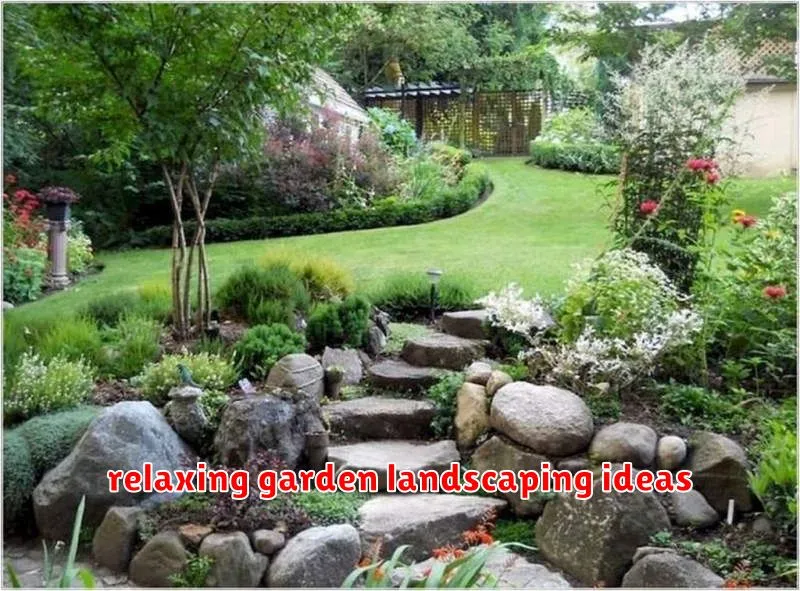Transform your outdoor area into a tranquil oasis with these inspiring garden landscaping ideas. Discover creative ways to design a relaxing and rejuvenating outdoor space, perfect for unwinding after a long day. We explore a range of landscaping designs, from minimalist modern gardens to lush, vibrant tropical landscapes, offering practical tips and design inspiration to help you create the perfect relaxing outdoor space tailored to your personal style and preferences. Learn how to incorporate calming elements like water features, carefully chosen plants, and strategically placed seating areas to achieve the ultimate in outdoor serenity.
Stepping Stone Pathways

Stepping stone pathways offer a charming and practical addition to any relaxing outdoor space. They provide a defined route through gardens, leading visitors to focal points such as seating areas or water features. The irregular placement of stones encourages a more natural and meandering feel, contrasting with the formality of paved walkways.
The material choice for stepping stones is diverse, allowing for customization to match the overall garden aesthetic. Natural stones like flagstone or slate provide a rustic look, while concrete stones can be molded into various shapes and sizes. Consider the size and spacing of the stones carefully; too large and the path feels overwhelming, too small and it lacks practicality. Proper spacing also allows for the growth of low-lying plants between the stones, further enhancing the natural beauty.
Beyond their functional purpose, stepping stone pathways contribute significantly to the overall ambiance of a garden. They create a sense of discovery and intrigue, gently guiding the eye through different sections of the landscape. The strategic placement of stepping stones can also emphasize existing garden elements, such as mature trees or flowering shrubs, effectively framing these features and highlighting their beauty.
Vertical Garden Walls
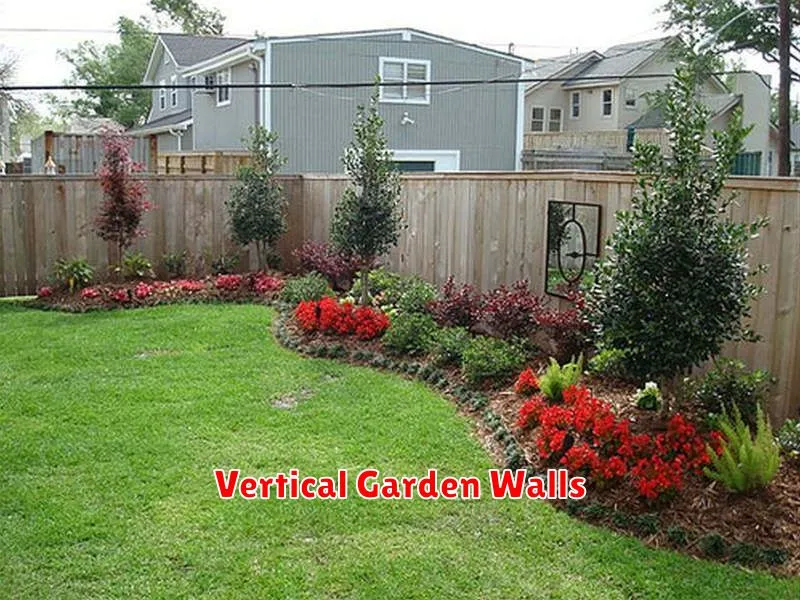
Vertical garden walls offer a unique and space-saving solution for incorporating greenery into your outdoor space. They are particularly beneficial for smaller gardens or areas with limited ground space. These walls can be constructed using a variety of materials, from simple wooden frames to more sophisticated modular systems, and can accommodate a wide range of plants, from herbs and flowers to climbing vines.
Creating a vertical garden wall provides a visually appealing focal point, adding texture and color to your landscape. The lush greenery helps to soften hard surfaces and create a more relaxed atmosphere. Furthermore, they can contribute to a cooler microclimate, particularly beneficial in hotter regions.
Consider the orientation and sunlight exposure of your chosen location when planning your vertical garden. Proper planning, including adequate watering systems and plant selection, is crucial for the success and longevity of your vertical garden wall. The result will be a beautiful and functional addition to your relaxing outdoor oasis.
Decorative Water Features

Incorporating decorative water features is a highly effective way to enhance the tranquility of your outdoor space. The gentle sounds of flowing water are naturally soothing, creating a relaxing ambiance perfect for unwinding after a long day. Options range from simple, elegant fountains to more elaborate ponds with aquatic plants, providing a wide array of aesthetic possibilities to suit various garden styles.
Consider the size and scale of your garden when choosing a water feature. A large pond might be ideal for a spacious garden, while a smaller fountain or birdbath could be more suitable for a smaller area. The material of the feature, whether it be stone, metal, or ceramic, should also complement the overall design and aesthetic of your landscaping.
Beyond their aesthetic appeal, water features offer several practical benefits. They can help to regulate temperature, particularly in warmer climates, and provide a habitat for beneficial insects and birds, further enriching your garden ecosystem. Proper planning and maintenance are crucial to ensure your water feature remains a visually stunning and functional element of your relaxing outdoor space.
Hanging Flower Baskets
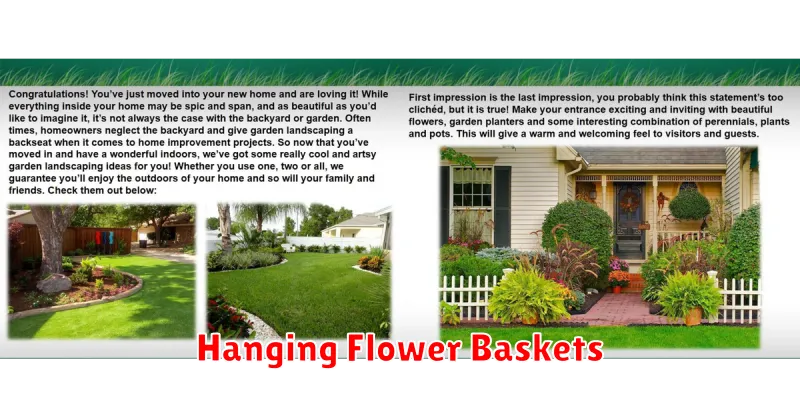
Hanging flower baskets offer a versatile and visually appealing addition to any relaxing outdoor space. They add vertical interest, softening hard lines and creating a sense of abundance. The choice of flowers is vast, allowing for customization to complement existing landscaping and personal preferences. Consider using a variety of textures and colors for maximum impact.
Proper placement is crucial for maximizing the aesthetic benefits of hanging baskets. Strategically positioning them near seating areas allows for close-up appreciation of the blooms. Consider the sunlight requirements of your chosen plants when selecting their location, ensuring they receive adequate light to thrive. Using different sized baskets and heights adds to the overall visual interest.
Beyond aesthetics, hanging baskets contribute to a sense of tranquility. The gentle sway of the plants in the breeze, and the vibrant colors of the flowers contribute to a calming and peaceful atmosphere. Regular watering and maintenance are essential to ensure the health and longevity of the plants, maximizing their contribution to your relaxing outdoor oasis.
DIY Compost Bins
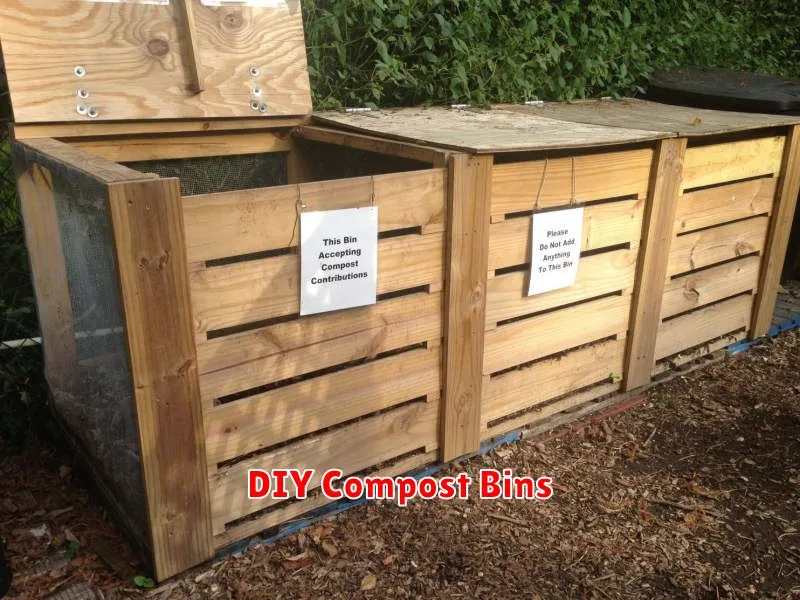
Creating a compost bin is a simple yet effective way to enrich your garden soil while minimizing waste. A basic bin can be constructed from readily available materials like wooden pallets, wire mesh, or even large plastic containers with drilled holes for aeration. The key is to ensure adequate airflow and moisture retention for efficient decomposition.
Three-bin systems are particularly efficient. These involve three separate compartments: one for adding fresh green and brown materials, one for active composting, and one for finished compost. This approach allows for a more controlled and organized composting process. Remember to maintain a balance of green (nitrogen-rich) and brown (carbon-rich) materials for optimal decomposition.
Regardless of your chosen design, proper placement is crucial. Locate your compost bin in a shaded area to prevent the compost from drying out too quickly. Ensure it’s easily accessible for regular turning and maintenance. With minimal effort and readily available resources, a DIY compost bin provides a sustainable and rewarding addition to your relaxing outdoor space.
Raised Vegetable Beds
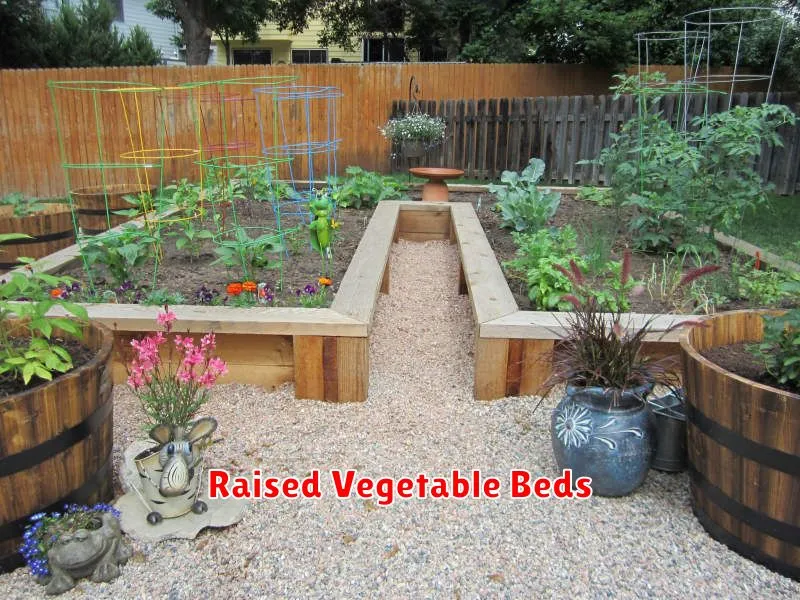
Raised vegetable beds offer a multitude of benefits for creating a relaxing outdoor space. They provide excellent drainage, preventing waterlogged soil that can hinder plant growth and create a less aesthetically pleasing environment. The increased height also makes gardening more accessible, reducing strain on the back and knees, contributing to a more comfortable and enjoyable gardening experience.
Furthermore, raised beds allow for better control over soil composition. You can customize the soil mix to perfectly suit your chosen vegetables, ensuring optimal nutrient levels and promoting healthy growth. This results in a more bountiful harvest, adding to the overall satisfaction and relaxation of tending your garden. The defined structure of the beds also contributes to a tidier and more visually appealing garden.
Finally, raised beds are highly versatile in terms of design and materials. They can be constructed from readily available materials like wood, stone, or even recycled materials, allowing you to seamlessly integrate them into your existing landscape design. This adaptability ensures that raised beds can complement any style, whether formal or informal, ultimately enhancing the tranquility of your outdoor space.
Solar-Powered Garden Lights
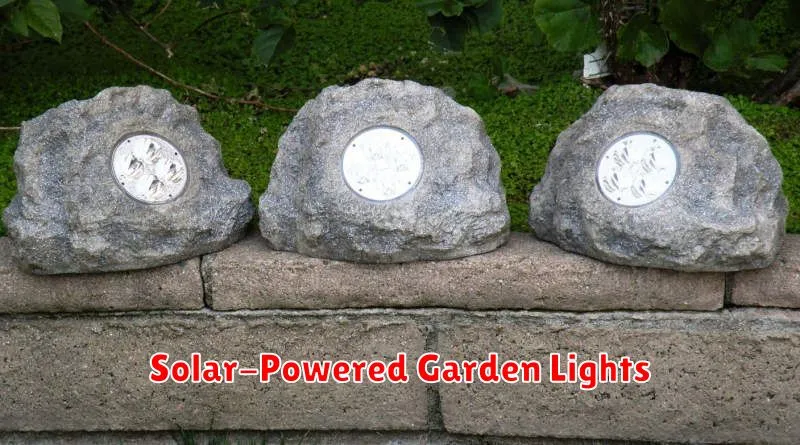
Solar-powered garden lights offer a practical and aesthetically pleasing solution for illuminating outdoor spaces. Their energy efficiency reduces reliance on the power grid, contributing to a more sustainable landscape design. These lights provide soft, ambient illumination, enhancing the relaxing ambiance of your garden without harsh glare.
Installation is typically straightforward, requiring minimal wiring and effort. Many models offer various styles and designs, allowing for customization to complement existing landscaping features. Consider pathway lighting to improve nighttime navigation, or accent lighting to highlight specific plants or architectural elements. Proper placement is key to optimizing the light’s effectiveness and enhancing the overall visual appeal.
Beyond their functionality, solar garden lights contribute to a more serene outdoor environment. The gentle illumination creates a calming atmosphere, perfect for evening relaxation or entertaining guests. The environmentally friendly nature of these lights aligns with a growing trend towards sustainable and eco-conscious landscaping practices. Choosing the right style and strategically placing them can transform your garden into a tranquil and inviting oasis.
Climbing Plant Trellises
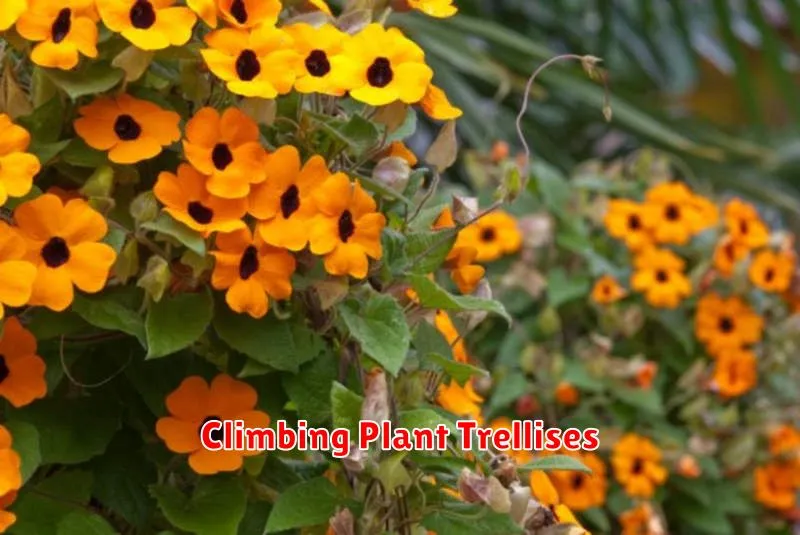
Climbing plant trellises offer a versatile and aesthetically pleasing solution for enhancing your garden’s landscape. They provide vertical support for climbing plants, maximizing space utilization and creating a visually interesting focal point. The variety of designs available, from simple arches to elaborate structures, allows for seamless integration with various garden styles and personal preferences.
Beyond their aesthetic appeal, trellises serve a practical purpose. By guiding the growth of climbing plants such as vines, roses, or clematis, trellises prevent overcrowding and improve air circulation, minimizing the risk of fungal diseases. This contributes to the overall health and vibrancy of your plants, leading to a more thriving and relaxing outdoor space.
When selecting a trellis, consider factors such as the size and growth habit of your chosen plants, the available space in your garden, and the overall design aesthetic you wish to achieve. Choosing the right trellis ensures both the structural integrity of the support and the harmonious integration of plants within your relaxing outdoor environment.
Eco-Friendly Fencing Options
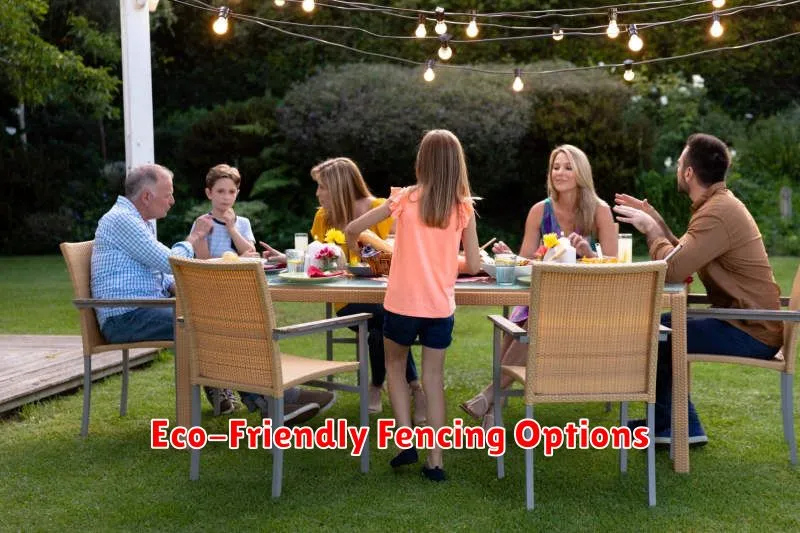
Creating a relaxing outdoor space often involves incorporating fencing for privacy and security. Fortunately, many eco-friendly options exist that minimize environmental impact. Bamboo fencing is a rapidly renewable resource, offering a natural aesthetic. Reclaimed wood, sourced from deconstructed structures, provides a rustic charm while diverting waste from landfills. These options often require less processing than new materials, lowering their carbon footprint.
Another sustainable choice is living fences, using fast-growing shrubs or hedges. These options offer natural beauty, require less material, and provide habitat for local wildlife. Consider native plant species for optimal environmental integration. Proper planning and maintenance are crucial for successful establishment and long-term health of a living fence.
When selecting eco-friendly fencing, it’s important to consider the entire lifecycle, from sourcing materials to disposal. Look for sustainably harvested materials and low-impact manufacturing processes. Choose options that are durable and require minimal maintenance to reduce the need for future replacements. Prioritizing locally sourced materials reduces transportation emissions, further minimizing environmental impact.
Native Plant Garden Designs
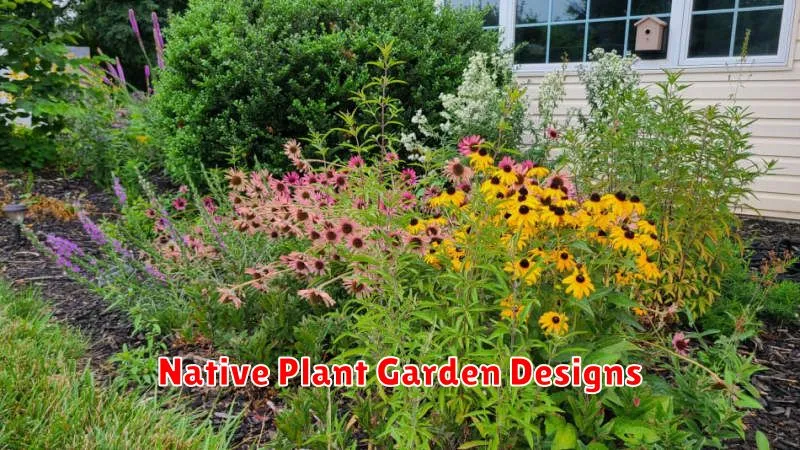
Incorporating native plants into your garden design offers numerous benefits for creating a relaxing outdoor space. Native plants are naturally adapted to your local climate and soil conditions, requiring less water and maintenance than non-native species. This translates to less time spent on upkeep, allowing you to truly relax and enjoy your garden. Furthermore, they attract local pollinators such as bees and butterflies, adding a vibrant and lively element to your landscape.
When designing with native plants, consider the overall aesthetic you wish to achieve. Group plants with similar water and sunlight needs together for optimal growth. Think about incorporating varying heights and textures to create visual interest and depth. Utilize native grasses and flowering perennials for a low-maintenance, yet visually stunning effect. Remember to research the specific needs of your chosen plants to ensure their successful integration.
The use of native plants also contributes to a healthier ecosystem. By supporting local biodiversity, you are helping to protect the environment and create a more sustainable outdoor space. This approach aligns with environmentally conscious landscaping practices, promoting a tranquil and ecologically responsible garden that benefits both you and the natural world. Choosing native plants is a simple yet powerful way to enhance the relaxing qualities of your garden while supporting your local environment.

